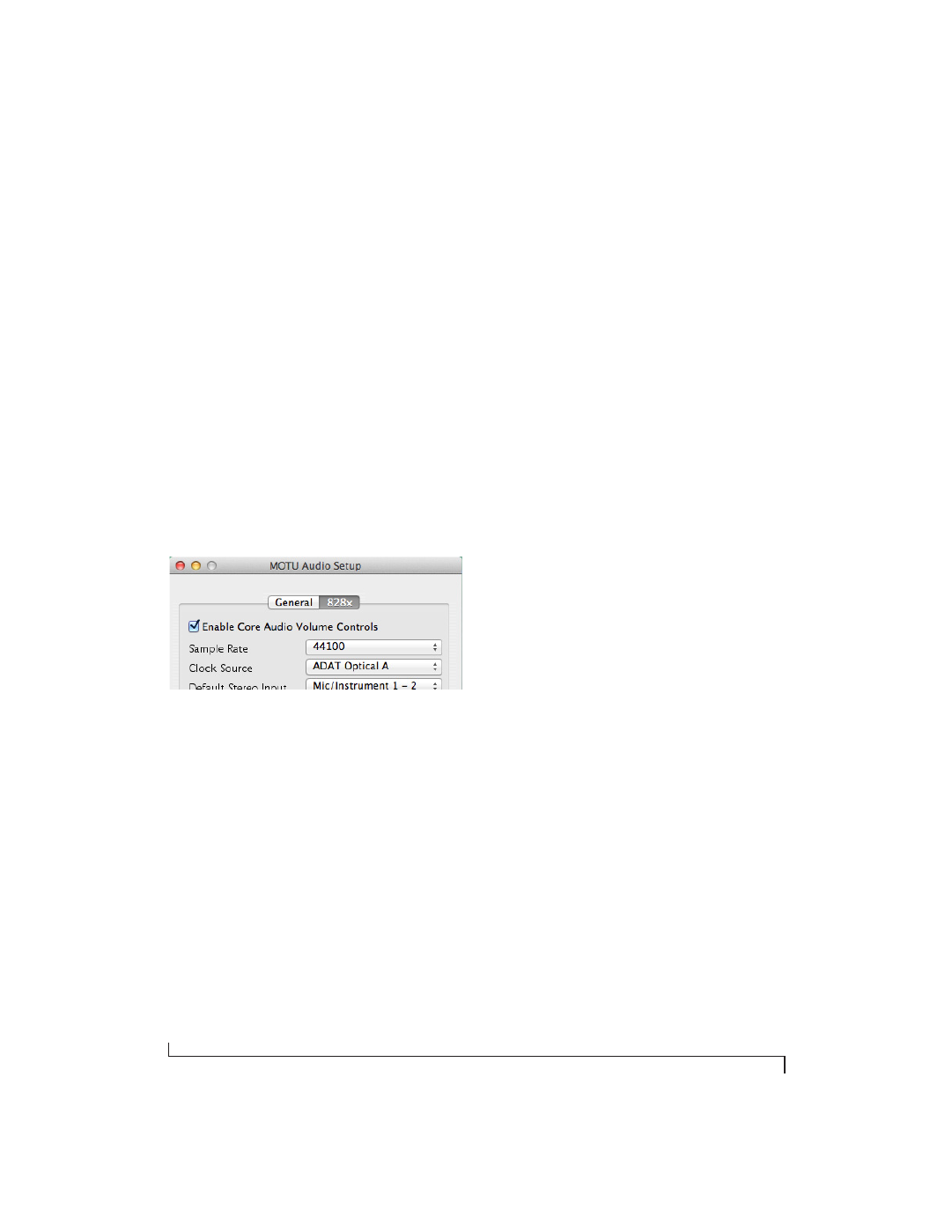S/pdif – MOTU 828x 28x30 Audio Interface with ThunderTechnology User Manual
Page 28

I N S T A L L I N G T H E 8 2 8 X H A R D W A R E
28
Choosing a clock source for optical connections
When connecting an
optical
device, make sure that
its digital audio clock is phase-locked (in sync
with) the 828x, as explained in “Making sync
connections” on page 32. There are two ways to do
this:
1. Resolve the optical device to the 828x
2. Resolve the 828x to the optical device
For 1), choose
Internal
(or any other clock source
except
ADAT optical
) as the clock source for the
828x in MOTU Audio Setup.
For 2), choose either
ADAT Optical A
or
ADAT
Optical B
as the 828x’s clock source (Figure 4-7). Be
sure to choose the optical port that the device is
connected to.
Figure 4-7: Resolving the 828x to an optical device.
For details about using the clock source setting and
the MOTU Audio Setup software in general, see
chapter 5, “MOTU Audio Setup” (page 39).
Using word clock to resolve optical devices
If the optical device you are connecting to the 828x
has word clock connectors on it, you can use them
to resolve the device to the 828x, similar to the
diagram shown in Figure 4-16 on page 34 for S/
PDIF devices with word clock. Also see “Syncing
word clock devices” on page 35.
S/PDIF
If you make a S/PDIF digital audio connection to
another device, be sure to review the digital audio
clocking issues, as explained in “Syncing S/PDIF
devices” on page 34.
The 828x supplies +12dB of digital trim (boost) for
the S/PDIF input pair, which can be adjusted from
CueMix FX (“Input trim” on page 75) or the front
panel (“The IN (inputs) menu” on page 49).
